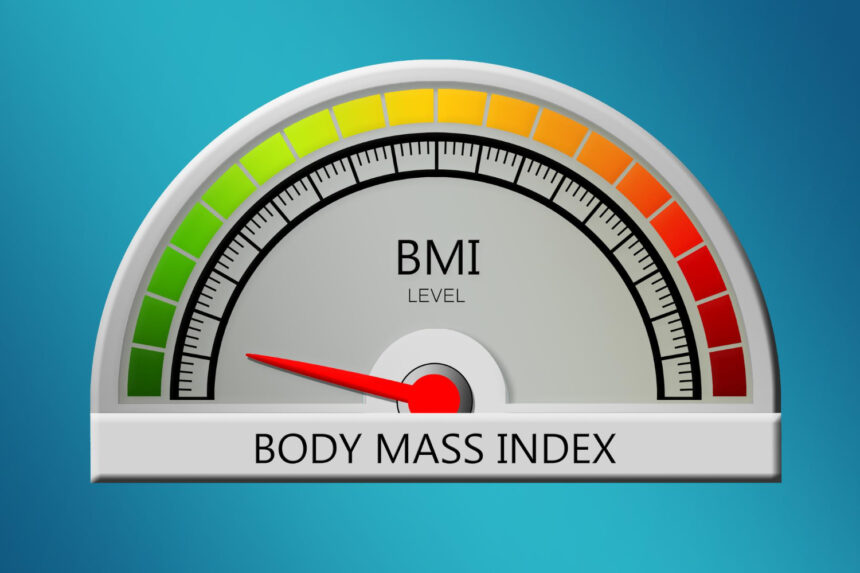Calculate Body Mass Index (BMI) with a BMI calculator to assess body fat based on height and weight. This measurement is valuable for understanding weight categories and overall health. Using a BMI calculator can help individuals determine whether they are in a healthy weight range, underweight, overweight, or obese.
BMI is commonly used because it provides a simple way to gauge weight-related health risks. While it is not a perfect measurement, it serves as a helpful starting point for discussions about weight and fitness. Various tools are available online, allowing anyone to quickly input their height and weight to get an immediate result.
Understanding BMI and its implications can lead to more informed choices about diet and exercise. Those curious about their health and fitness should find the information provided by a BMI calculator beneficial in setting personal health goals.
Understanding BMI
BMI, or Body Mass Index, is a widely used tool that helps assess body fat based on a person’s height and weight. It offers insights into potential health risks related to weight.
Definition and Importance
Body Mass Index (BMI) is a measuring tool that estimates body fatness. It is calculated by taking a person’s weight in kilograms and dividing it by the square of their height in meters. For adults, BMI categories include underweight, normal weight, overweight, and obesity. This classification is important because it helps identify individuals who may be at risk for health issues like heart disease or diabetes.
BMI is not a direct measure of body fatness, but it provides a useful screening tool. Many health organizations, including the CDC, recommend using BMI to communicate weight status and potential health risks effectively.
Calculation Formula
The formula for calculating BMI is straightforward and can be expressed as follows:
BMI = weight (kg) / height (m²)
To use this formula, a person first needs to convert their height from centimeters to meters. For example, if someone is 180 cm tall, they would convert this to meters by dividing by 100, resulting in 1.8 m. If this individual weighs 75 kg, they would calculate their BMI as:
BMI = 75 / (1.8 * 1.8) = 23.15
This result typically falls within the normal weight category, which indicates a healthy weight range.
Limitations and Considerations
While BMI is a useful tool, there are limitations to consider. It does not distinguish between muscle and fat. Therefore, athletes or muscular individuals may have a higher BMI but not have excess body fat.
Age, sex, and ethnicity can also impact the relationship between BMI and body fat. For example, older adults often have more body fat compared to younger adults at the same BMI level.
BMI is best used alongside other assessments like waist circumference and overall health evaluations for a complete picture of health. It should not be the sole factor in determining an individual’s health status.
Using a BMI Calculator
A BMI calculator helps individuals determine their body mass index, a useful measure for assessing weight status. Understanding how to measure BMI accurately, find online tools, and interpret results is essential for making informed health decisions.
Steps to Measure BMI
To calculate BMI, follow these simple steps:
- Gather Information: Obtain accurate measurements of weight and height. Weight should be in kilograms (kg) and height in meters (m). If using centimeters, convert to meters by dividing by 100.
- Use the Formula: The BMI formula is: [ \text{BMI} = \frac{\text{weight (kg)}}{\text{height (m)}^2} ] For example, if a person weighs 75 kg and is 180 cm tall (1.8 m), the calculation would be: [ \text{BMI} = \frac{75}{1.8^2} \approx 23.15 ]
- Record the Result: After the calculation, note the BMI value for interpretation against standard weight status categories.
Online Tools and Mobile Apps
There are many online resources and mobile apps available to calculate BMI easily. These tools often provide user-friendly interfaces where individuals can input their height and weight.
- Features: Many calculators include options for metric and imperial units, making them versatile for different users.
- Examples: Trusted websites like the CDC and health-focused mobile apps offer BMI calculators. Users can quickly check their BMI without manual calculations.
- Benefits: Using an online calculator saves time and reduces the chance of mathematical errors in BMI calculations.
Interpreting the Results
Interpreting BMI results is crucial for understanding weight status. The calculated BMI value corresponds to different categories:
- Underweight: BMI less than 18.5
- Normal weight: BMI 18.5 – 24.9
- Overweight: BMI 25 – 29.9
- Obesity: BMI 30 or greater
These categories can help indicate potential health risks. For instance, a higher BMI may suggest a greater risk of conditions like diabetes or heart disease. It is essential to combine BMI with other health indicators for a complete picture of one’s health.
BMI in Health and Fitness
Body Mass Index (BMI) plays a vital role in assessing health and fitness levels across various populations. Understanding how BMI applies to different groups and its implications for health can guide individuals in their fitness journeys.
BMI for Different Populations
BMI calculations apply to various groups like adults, children, and athletes. For adults, BMI is used to classify weight status, identifying underweight, normal weight, overweight, and obesity based on specific ranges.
Children and teenagers have dedicated BMI percentiles. Their BMI must consider growth patterns since their bodies are still developing. For athletes, BMI may not accurately reflect fitness levels. For instance, a muscular athlete might have a high BMI but not excess body fat.
| Group | BMI Range | Classification |
|---|---|---|
| Adults | 18.5 – 24.9 | Normal weight |
| Children (2-19) | Varies by age | Age-specific percentiles |
| Athletes | May not apply | Unique considerations |
Implications for Health and Wellness
BMI serves as a helpful screening tool for health risks. Higher BMI values can indicate greater risk for conditions like heart disease, diabetes, and hypertension. Individuals with a BMI in the overweight or obese range may benefit from lifestyle changes, such as improved diet and increased physical activity.
While BMI is useful, it is not the sole indicator of health. It is important to consider other factors, like waist circumference, muscle mass, and overall physical fitness. Health professionals often recommend combining BMI with other assessments to make informed health decisions. The focus should be on achieving a balanced lifestyle and maintaining a healthy weight rather than solely targeting a specific BMI value.






